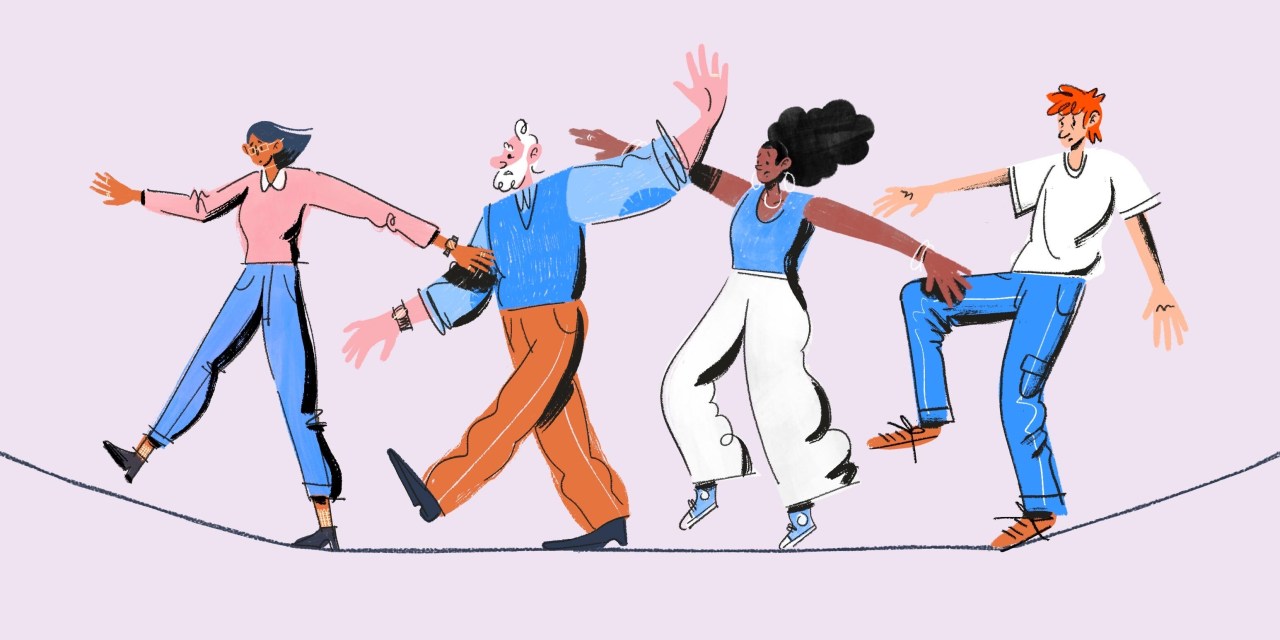Has dressing casually in the office gone too far?

Dressing more casually for work has increasingly become commonplace across a range of industries, but some of the outfits staff are donning now as they return to offices might be taking it too far.
About half of U.K. employers say their employees aren’t presenting themselves acceptably on the job and wearing pajamas, leggings and hoodies, and showing up with messy or unwashed hair, according to a survey from hiring platform Indeed including responses from over 1,000 workers and 500 employers. Some 30% of those employers said they’ve started enforcing stricter dress codes, or would if they could.
It comes as the share of workers dressing in business professional attire hit 3% this year — the lowest level since Gallup began collecting data on it in 2002. In 2019, about 7% of workers said they wear a suit or formal business wear to work.
Balancing professionalism and individuality in the workplace is an ongoing challenge today illustrated through this debate over casual workwear, though some workers do appear to recognize the need to dress a bit more formally, particularly in certain situations on the job.
Employers said when attending face-to-face meetings with clients and stakeholders, staff are actually dressing more formally than before the pandemic, the Indeed survey found, but they’re dressing down significantly when they are in the office with colleagues. There are also some big generational differences in who dresses up for work today.
Somewhat surprisingly, Gen Z workers are the most keen on dressing up for all workplace situations. Over 40% dress in business attire in front of clients, compared to 15% of those aged 35 or older. In the office in general, more than 20% of Gen Z workers wear professional attire, compared to just 9% of workers 35 years old and over.
“Having entered the workforce during lockdowns or the vastly different post-pandemic world, Gen Z workers never received the traditional in-office-experience. Feeling a need to make up for that, many of these younger workers may now prefer dressing to impress when they come to the office,” said Danny Stacy, U.K. head of talent intelligence at Indeed.
“As working from home remains a steadfast part of many organizational cultures, naturally less time is spent with colleagues, clients and managers in person. So it’s no surprise that many Gen Z workers put extra care into their appearance when traveling in; making the most of any face-time they do get with stakeholders,” Stacy said.
But overall the desire to dress more casually or at least have more autonomy over what to wear to work remains strong, and companies could stand to benefit from relaxing office dress codes as employees increasingly see it as a valuable perk.
About a quarter of workers said they would be enticed to go to the office if they could wear any clothing or styles they choose, a September report from Owl Labs including responses from over 2,000 U.S. based workers found.
“A casual or non-existent dress code can also help employees feel more comfortable and relaxed in their work environment, allowing them to focus on work rather than what they are wearing,” said Owl Labs CEO Frank Weishaupt.
Post-pandemic, “In the grand scheme of things, a dress code feels like an insignificant thing to harp on and one that employees are no longer willing to spend time stressing about. They would much rather focus on getting their work done and prioritizing work-life balance. If employers are smart, they will recognize that and adjust policies accordingly,” Weishaupt said.


